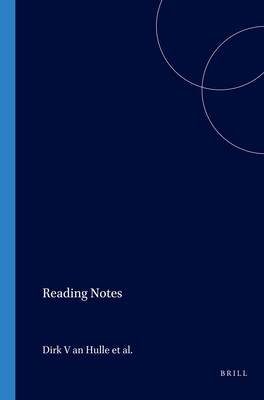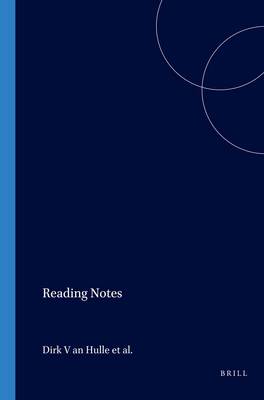
- Afhalen na 1 uur in een winkel met voorraad
- Gratis thuislevering in België vanaf € 30
- Ruim aanbod met 7 miljoen producten
- Afhalen na 1 uur in een winkel met voorraad
- Gratis thuislevering in België vanaf € 30
- Ruim aanbod met 7 miljoen producten
Zoeken
Omschrijving
Reading notes constitute a vast resource for an understanding of literary history and culture. They indicate what writers read as well as how they read and what they used in their own work. As such, they play an important role in both the reception and the production of texts. The essays in this volume, representing the newest trends in European and international textual scholarship, examine literary creation and the relationship between reading and writing. To study how readers respond to writing and how reading engenders new writing, the contributing scholars no longer take for granted that authors write in splendid isolation, but turn to a more broadly sociological investigation of authorship, assigning new roles to the writer as reader, notetaker, annotator, book collector and so on.
Notes and annotations may be fragmentary, private, undigested and embryonic, but as witnesses to the reading process, they tell unique stories about writers and readers, ranging from great marginalists like Coleridge to women annotators of cookbooks. This subject of research is a junction of several fields of research and tries to bridge gaps between separate disciplines with a common ground, such as the history of the book, the history of reading, and the history of writing, scholarly editing, and textual genetics (the analysis, commentary and critical interpretation of the way in which works of art come into being), bridging the gap between literary and textual criticism.
Notes and annotations may be fragmentary, private, undigested and embryonic, but as witnesses to the reading process, they tell unique stories about writers and readers, ranging from great marginalists like Coleridge to women annotators of cookbooks. This subject of research is a junction of several fields of research and tries to bridge gaps between separate disciplines with a common ground, such as the history of the book, the history of reading, and the history of writing, scholarly editing, and textual genetics (the analysis, commentary and critical interpretation of the way in which works of art come into being), bridging the gap between literary and textual criticism.
Alleen bij Standaard Boekhandel
+ 457 punten op je klantenkaart van Standaard Boekhandel
Beoordelingen
We publiceren alleen reviews die voldoen aan de voorwaarden voor reviews. Bekijk onze voorwaarden voor reviews.








